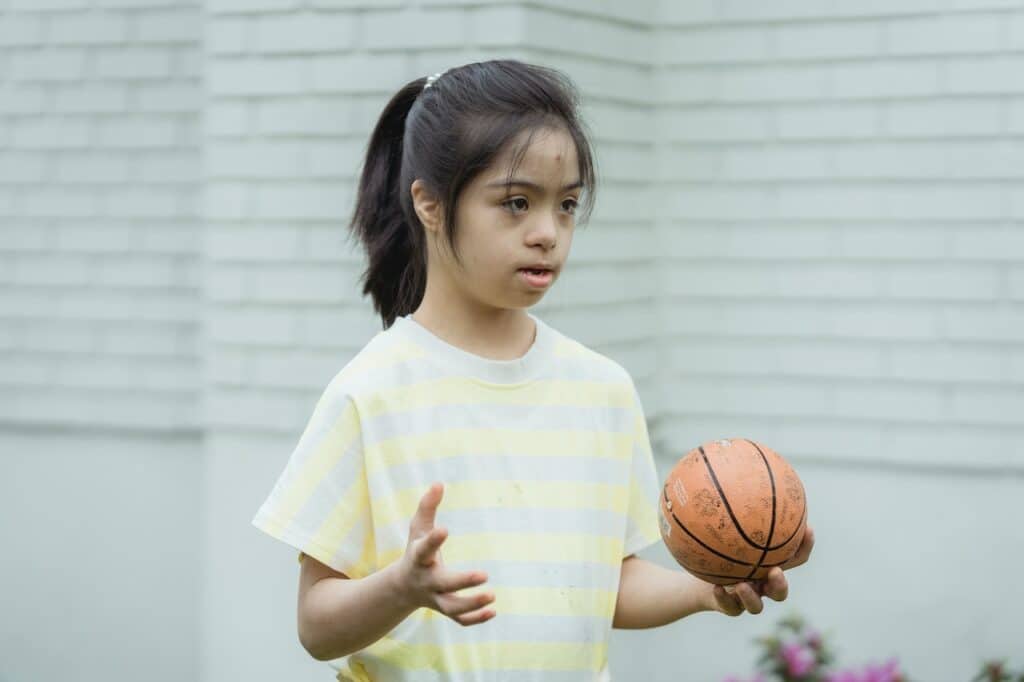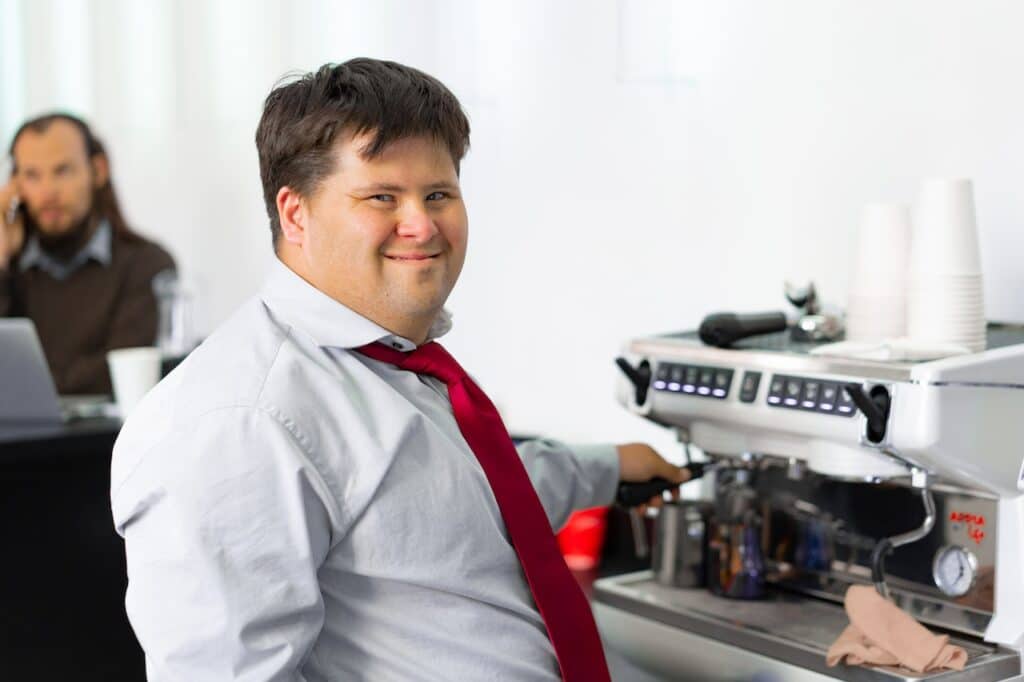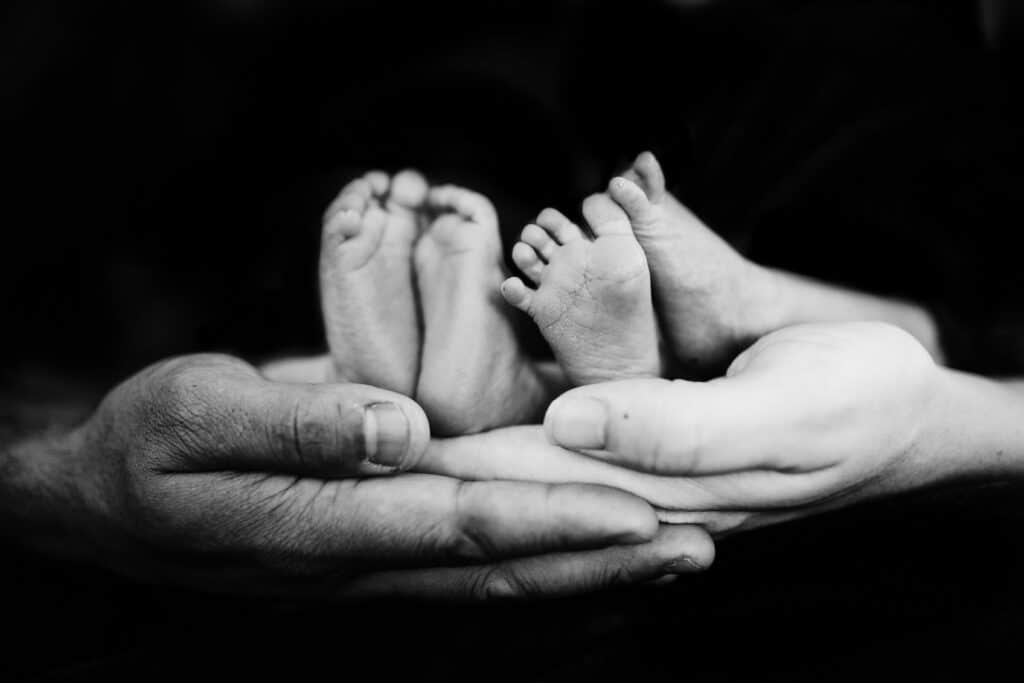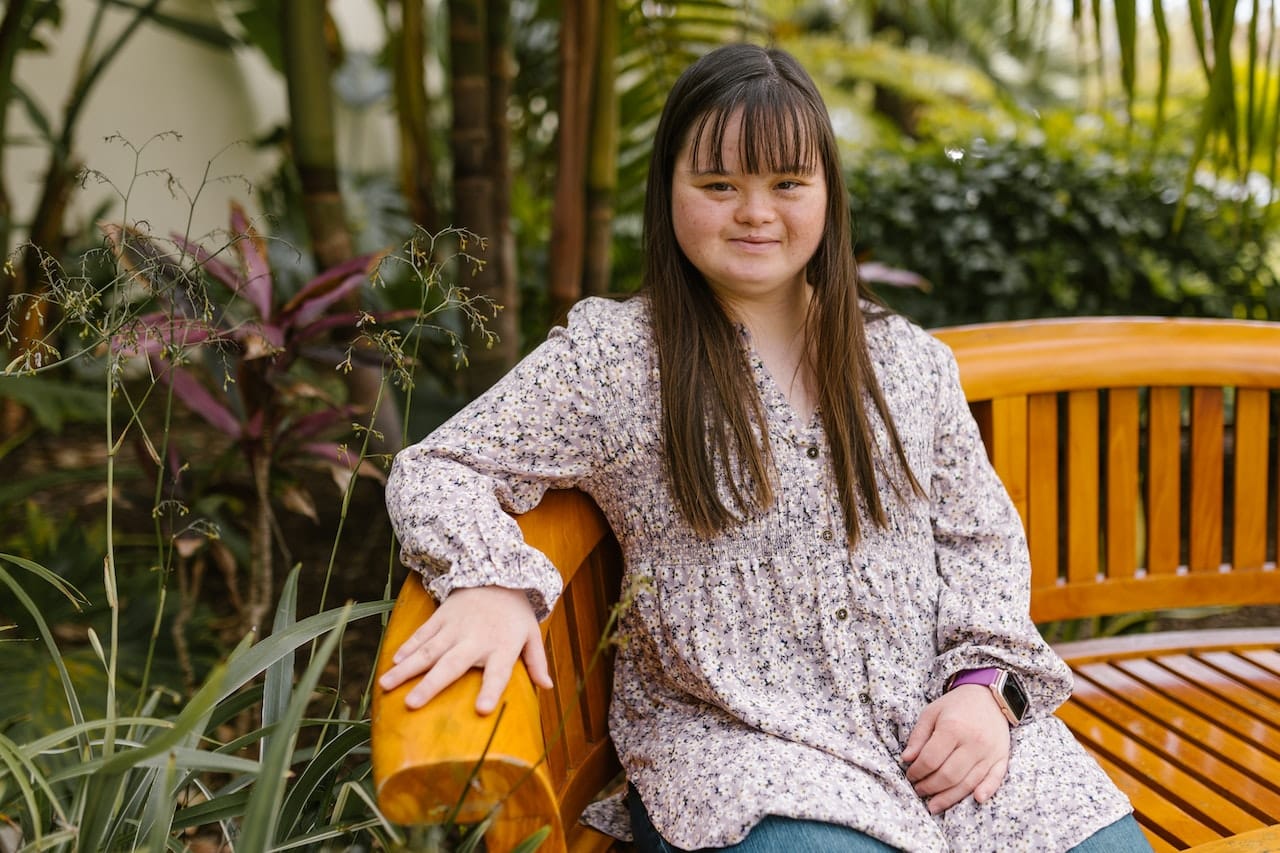As of 2020, there were almost 13,500 people with Down syndrome living in Australia, up from ~2,850 in 1950 according to research studies. We’re sure you have loads of questions, so in this article we cover the causes of Down syndrome in adults and children, whether you can prevent it, what features you’ll see with Down’s and how pyelectasis is related.
First up, Down syndrome is a genetic condition that happens when a person has three copies of chromosome 21 instead of two, which results in physical and intellectual disabilities. The condition can’t be cured but people living with it can lead positive and fulfilling lives.
We wanted to put to rest some of the myths around the causes of Down syndrome, Down syndrome in adults, plus much more. Here’s your facts-only guide. Let’s start…
In this article
What is Down syndrome?
As explained above, Down syndrome happens when a baby is born with an extra copy of chromosome 21. While most people have two copies of chromosome 21, a person with Down syndrome has three in total. This is why Down syndrome is sometimes called trisomy 21.
Down syndrome is a genetic disorder that presents itself as a baby grows in utero. Nowadays, it can often be detected before the baby is born. In previous years, this wasn’t possible. If it isn’t detected before birth a blood test will confirm it afterwards.
Did you know: World Down Syndrome Day falls on the 21st of March every year.

Physical characteristics of Down syndrome
It varies from person to person, but some of the physical characteristics of Down syndrome include:
- Most adults and children with Down’s have almond-shaped eyes that slant upward to some degree.
- The face of a person with Down syndrome often tends to be flatter across the nose and more rounded in shape. Small ears are also common.
- Adults with Down syndrome tend to be smaller in stature.
- Most people with Down syndrome have lower muscle tone than people without it.
- Many have a single large crease or line across the palm of the hand (palmar crease).
It is important to note that there has been a wonderfully positive change in life expectancy in the past 70 years. In the 1950s, babies with Down syndrome in Australia had a life expectancy of 15 years of age. Now it’s around 60 years of age.
Other features of Down syndrome
Down syndrome does cause developmental delay and learning disability. However, the extent of disability varies from person to person.
Generally speaking, babies with Down syndrome will reach the same major milestones as their peers. This includes smiling, sitting, up, walking, crawling, and so on. Watch this informative video below on parenting a child with Down syndrome:
Speech a noticeable concern
As babies turn into children and adults, speech is usually the most delayed developmental area. Even with therapy throughout their childhood, adults with Down syndrome usually still require more support in this area and others than most other adults.
In Australia, the NDIS can offer assistance in helping people with Down syndrome to reach their potential and improve their daily living.
If you’re new to the NDIS (or even if you’re an old hand!), the system can seem very overwhelming. Check out some of our articles for guidance with exploring the steps to access the NDIS, setting NDIS goals, what the NDIS considers reasonable and necessary supports, how to find a good NDIS support coordinator and more. You may also want to read about NDIS early childhood early intervention access.
What are the causes of Down syndrome?
We know how Down syndrome occurs – because a chromosome is duplicated. However, experts do not yet understand why it happens. Most people have 46 chromosomes. Individuals with Down syndrome have 47. This is essentially the root cause of Down syndrome. However, nobody is sure why the duplication happens.
It’s important to remember that Down syndrome is a genetic condition; somebody doesn’t develop it over time. Much like the colour of your eyes or your mature height, nobody can cause anyone to be born with Down syndrome.
In fact, all experts agree that it’s pure chance for a baby to have the extra chromosome that causes Down syndrome happens. Though some factors increase that chance.
Mother’s age and Down syndrome
There is definitely a link between the age of the mother and the probability of a child developing Down syndrome.
While a mother of any age can have a child with Down syndrome, the chance increases as they get older. For a woman who conceives at 25, the chance is 1 in 1,250. It increases to about 1 in 100 for a woman who conceives at age 40.
Aside from this, it’s difficult to pinpoint any other factors that may make a woman more likely to have a baby with Down syndrome.

Is Down syndrome autistic?
This question is actually quite a common according to Google search data. No, Down syndrome and autism are two different things. Though they have some overlapping characteristics, they’re distinct conditions with different causes and diagnostic criteria.
Down’s in a nutshell
We know an extra copy of chromosome 21 causes trisomy 21, or Down syndrome. People with Down syndrome usually have certain physical features, like upward-slanting eyes, a flattened facial profile, and shorter stature. The condition causes intellectual disabilities and other medical conditions.
Autism in a nutshell
Autism is basically a neurological disorder marked by difficulties interacting socially, communication challenges, and repetitive behaviour. Researchers are still trying to figure out the exact underlying mechanisms of autism, which may include genetics and environment. Interested in learning more about autism? Read our ‘Why Autism in Girls Might Be Harder to Diagnose‘ article and our article on Myths About Asperger’s Syndrome.
Are you aware that Assistance Dogs can help with autism? Check out this ‘Assistance Dogs and Autism: How Can a Dog Help?‘ article for more info.
Although some adults and children with Down syndrome have autism, the two conditions are distinct and can coexist. Each condition requires its own understanding, support, and interventions to meet the unique needs of the people affected.

Does pyelectasis mean Down syndrome?
Pyelectasis doesn’t always mean Down syndrome. Basically, pyelectasis is an enlargement of the renal pelvis, the part of the kidney that collects urine before flowing into the ureter. Prenatal ultrasounds can detect pyelectasis, and there are lots of causes.
Some cases of pyelectasis are associated with Down syndrome, but it can also happen to people without Down syndrome. Prenatal screenings sometimes find pyelectasis as a soft marker or minor abnormality. It’s important to note that pyelectasis alone isn’t an indication of Down syndrome.
If pyelectasis is found during prenatal screening, further evaluations and diagnostic tests may be recommended to determine the foetus’ overall health and if there are any additional indicators of Down syndrome. Other tests may include ultrasounds, genetic testing, or consultations with specialists.
Depending on your individual circumstances and test results, a healthcare professional can provide specific information and guidance.
How can one twin have Down syndrome?
“Discordant” or “discrepant” Down syndrome occurs when one twin has Down syndrome while the other does not. Discordant Down syndrome in twins is rare but possible.
There are two types of twins: identical (monozygotic) and fraternal (dizygotic). The occurrence of discordant Down syndrome depends on the type of twins.
As opposed to Down syndrome in one child, discordant Down syndrome in twins, especially identical twins, is relatively rare. A doctor will help guide the parents through appropriate genetic testing, diagnosis, and more if they discover discordant Down syndrome in a twin pregnancy.

Read more about children and disability
We’ve plenty more info for parents of children living with disability:
- 6 Considerations for Buying Children’s Wheelchair
- Toys with Disability Helping Teach Inclusivity
- Buying Presents for Children with Disabilities
- 5 Kids Show Characters Giving Disability Visibility
- How is the Australian Disability Strategy Tracking?
- Exercising With Limited Mobility
- Kids Roll Through Halloween in Wheelchair Style
Blue Badge Insurance offers disability-specific insurance
As disability specialists, we understand your unique needs and challenges. We offer specialised insurance solutions from wheelchair insurance and mobility scooter insurance to Assistance Dogs Insurance.
Plus, regardless of whether your vehicle is converted or not, we offer discounts on disability car insurance if you have a disability parking permit. Why not get a quick quote today?








